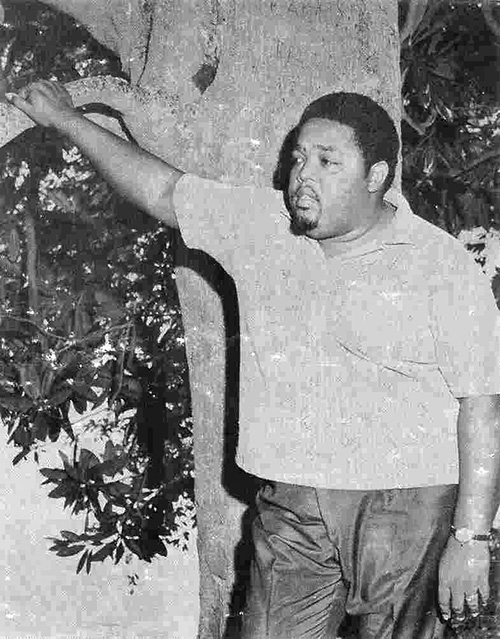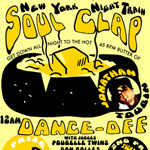NY Night Train Soul Clap & Dance-Off Top 500 (441-460): Track by Track
The third installment, numbers 441-460, of my Soul Clap and Dance-Off Top 500 list where I count down my favorite original 45s from the Soul Clap & Dance-Off party. This page is both a track list and supplement to my Soundcloud mix/podcast. Since the records are all pitched, cut, and yelled over the way I do it at my parties, this page and its YouTube playlist give you a chance to hear the original vinyl in its natural state and will hopefully also prove to be a solid resource for learning more about the records and the artists. I’ve also provided links to where you can get more in-depth in your soul journey. Thank you for listening!
441. Susan King “Building A Wall Around My Heart (Toy, 1965)
The ideal track for all those trying to be strong but making themselves emotionally unavailable in the process! Its hard to believe the fresh youthful contemporary voice doing the lead on this Girl Group-ish mod ‘60s track belongs to a 56-year-old singer from another era! Also a songwriter and bassist, Nora Lee King became known for singin’ the blues way back in the 1930s and cut a few jazzy Decca sides in 1941 – including a 78 with one of the earliest uses of the term “groovy” in popular recording, “Boy! It’s Solid Groovy.” She played with a number of notable artists and was also featured on a few Mary Lou Williams sides. She was married to legendary jazz guitarist Lawrence Lucie whose work you know from iconic recordings by a veritable who’s who of the pre-bebop jazz pantheon: Louis Armstrong, Jelly Roll Morton, Duke Ellington, Billy Holliday, and on and on and on. Artists whose faces appear on a U.S. postage stamps! And the cool contemporary guitarist rockin’ here with such authority, subtlety, steadiness, and fuzz is this very hero who was doing his thing since the era of the giants. King and Lucie started up NYC’s Toy Records in 1962 where she turned out ten solid sides as Susan King between 1963 and 1965. Later in life the couple also played beside other ‘20s and ‘30s jazz veterans in The Harlem Blues and Jazz Band.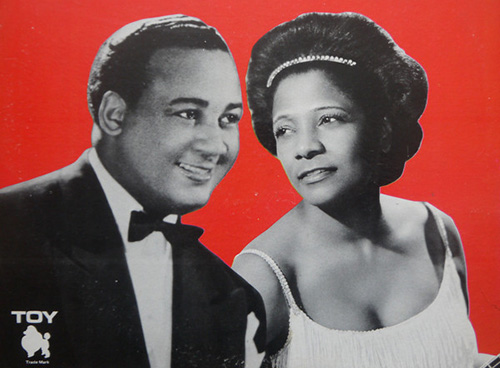
Some of the information out there is conflicting and I had to draw a lot of conclusions from solid sources like NY Public Library’s Lawrence Lucie archive which say Norah Lee King also went by Susan King. King and Lucie are on record as running Toy Records and frequently playing together throughout their marriage. While I couldn’t find an example of Nora Lee King vocals after 1941 other than a 1981 video of her killing it with the Harlem Blues and Jazz band in 1981 (see Youtube link below), the singer on “Building A Wall Around My Heart” sounds similar to the voice as you hear on two more of my Clap spins, Susan King’s “Drum Rhythm” on Turntable and Lola King’s “I Got A Good Thing” on Sound of Memphis (Lola was another of what Allmusic.com refers to as Nora Lee’s “bewildering array of pseudonyms”) and Larry Lucie was involved in both productions. So I concluded that, while this doesn’t sound like a typical 56 year-old from deep classic American music roots, and this is far from the style and timbre heard on her 40s recordings, all of the facts point to Nora Lee King not only involved in producing youth culture records in the ‘60s with her jazz age husband, but also singing on them!
– Sir Shambling’s Susan King page
– NY Public Library archive on Lawrence Lucie
– YouTube video of Nora Lee King killing it in 1981 in Hamburg with Harlem Blues and Jazz Band
– Some fascinating required reading! Lawrence Lucy in his own words and more about playing with Duke Ellington at the Cotton Club, being the best man at Louie Armstrong’s wedding, guitar lessons, and more
Other Susan King original 45s spun at NY Night Train Soul Clap & Dance-Off:
– Drum Rhythm (Turntable, 1965)
– I Got A Good Thing (Sound of Memphis, ?)
442. / 443. Soul Bros., Inc. “Slow Motion” (Shandy, 1968) / “Soul Train, Pt. 1” (S.B.I., 1972)
I’m gonna just come right out and transparently state that as a Houston, Texas native I’m 100% biased and root for the underrated soul heritage of my hometown – one which goes far beyond Duke/Peacock Records, Archie Bell and the Drells/TSU Tornadoes, and Kashmere Stage Band. And, outside of my dozens of Bobby Blue Bland 45s, Soul Bros. Inc are easily the Bayou City band most represented in my stacks and sets. Between 1968 and 1974 they left behind twenty-three killer sides that still pack a mighty punch a half-century later.
Soul Bros., Inc. exploded into Houston’s record bins with the heavy but kinetic dance party bomb that is “Slow Motion” in 1968. Like so many other Texas records, the flip features a cover Big Sambo’s ubiquitous Lone Star standard “The Rains Came” (made famous internationally by Sir Douglas Quintet’s hit version). I’m as wowed by the ease in which this razor-tight aggregation smashes its way through the action-packed dynamics as how by George Brown’s deep rich rasp casually breaths so much smokey soul warmth. And dig the post-punkish rhythm guitar plugging away and poking out atcha in the high frequencies. Brown, also famously the vocalist on the band’s massive Northern Soul standard “Pyramid,” and his own deep ballad “Baby’s Not Home,” is curiously credited here as “Curtis Brown.” And the mysterious Shandy imprint only lasted for three releases, all by Soul Bros, Inc before they started self releasing on their own imprint. Could this be their own label as well?
In what must’ve felt like a miracle, “Soul Train” appeared on TVs everywhere in 1971 and Soul Bros, Inc’s “Soul Train, Pt. 1” is a funkier heavier and modernized take on the show’s early theme, The Rimshot’s 1972 “Soultrain,” which was a cover of King Curtis’ The Rinkydinks 1963 “Hot Potato” (re-released as The Ramrods’ “Soultrain” on Rampage after the success of the show. Are you confused yet?). Chock full o’ shimmering B3, wah-wah guitar, cosmically delayed vocal interjections, and their trademark party feel, The Soul Bros inflate their “Soul Train” to such epic proportions of vibrance, grandiosity, and heaviness that it dwarfs its predecessors – soaring like a blimp above the more elegant previous versions and losing them in its broad shadow. And that isn’t to say that I don’t also love both the Rimshots/Ramrods’ “Soul Trains” for different reasons. Rather I’m just be a Texan here and boldly proclaiming that this glitzy big baroque treatment ups the ante in so many ways!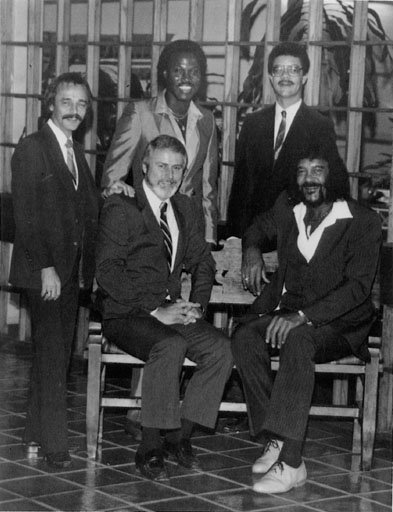
– a super-informative Soul Bros Inc discussion with many photos, specifics, etc on Soul Source
– Soul Bros Inc page on Tramp Records
Other Soul Bros Inc original 45s spun at NY Night Train Soul Clap & Dance-Off:
– Girl In The Hot Pants (S.B.I., 1971)
– Put It On Him (S.B.I., 1971)
444. The Soul Sisters “Think About The Good Times” (Sue, 1965)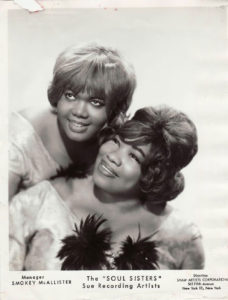 What better way to follow the Soul Brothers, than with a killer by The Soul Sisters! Despite a lack of web and record collector attention, these jaw-droppingly talented non-biological sisters, the duo of Theresa “Tresia” Cleveland and Ann Gissendanner, were a popular act on both sides of the Atlantic in their day. They received high billing on revues and had a succession of releases on Sue records, all of which are still abundant and easy to find today. Their 1964 #46 Pop hit “I Can’t Stand It,” a standard in the live repertoires of soul, garage, and British Invasion Bands worldwide, was recorded by everyone from Baby Washington to The Underbeats to Spencer Davis Group. As you can hear from my personal favorite “Think About The Good Times,” these sisters wail harder and tougher than anybody you could imagine but, despite all the racket, are as tuneful as they come. Their writing, arrangements, and backing players are typically top notch. And while the A-Sides are are pure propulsive party fire, the B-Sides prove they can also take it slow like nobody’s business. Maybe The Soul Sisters are too unknown for the canon crowd and their records are too common for collectors and DJs? And too rough for Girl Group and Northern Soul fans and too pop for rhythm and blues and gospel fans? Like so many great artist they just don’t fit in. But, if I’ve learned anything from spinning their 45s for years, the dancers always feel the flames.
What better way to follow the Soul Brothers, than with a killer by The Soul Sisters! Despite a lack of web and record collector attention, these jaw-droppingly talented non-biological sisters, the duo of Theresa “Tresia” Cleveland and Ann Gissendanner, were a popular act on both sides of the Atlantic in their day. They received high billing on revues and had a succession of releases on Sue records, all of which are still abundant and easy to find today. Their 1964 #46 Pop hit “I Can’t Stand It,” a standard in the live repertoires of soul, garage, and British Invasion Bands worldwide, was recorded by everyone from Baby Washington to The Underbeats to Spencer Davis Group. As you can hear from my personal favorite “Think About The Good Times,” these sisters wail harder and tougher than anybody you could imagine but, despite all the racket, are as tuneful as they come. Their writing, arrangements, and backing players are typically top notch. And while the A-Sides are are pure propulsive party fire, the B-Sides prove they can also take it slow like nobody’s business. Maybe The Soul Sisters are too unknown for the canon crowd and their records are too common for collectors and DJs? And too rough for Girl Group and Northern Soul fans and too pop for rhythm and blues and gospel fans? Like so many great artist they just don’t fit in. But, if I’ve learned anything from spinning their 45s for years, the dancers always feel the flames.
Soul Sisters 45s spun at NY Night Train Soul Clap and Dance-Off:
– Flashback (1966)
– I Can’t Stand It (1964)
– Loop De Loop (1964)
The Coanjos (Louis Joe Johnson + Soul Sisters)
– Dance The Boomerang (Dapt, 1961)
445. Guitar Ray “Patty Cake Shake” (Hot Line, 1967)
While I wish I had more luck finding the fabulous Guitar Ray’s other elusive original New Orleans 45s, I’m thrilled I finally nabbed a copy of my favorite “Patty Cake Shake” a few years back and its served me well! Like its parent company NOLA Records, Hot Line was also blessed by the genius arrangements of Wardell Quezergue, the muscular beat of drum god Smokey Johnson, and, generally speaking, the finest session players from the greatest music scene of all time. And what you’re hearing is a prime exemplar of the iconic magic these legends were laying down at Cosimo Matassa’s studio in the late ’60s – but charging forward at a faster tempo than most.
Young Dr. John, when he was still guitar slingin’ Mac Rebennack, brought Earl King’s cousin Ray Washington into Cosimo Recording Studios in 1959 to record his debut for Johnny Vincent’s Vin imprint. Though Guitar Ray’s three early 45s were all quality releases, the eight sides he cut from 1966 to 1968 for Hot Line stand out as some of the best Crescent City cuts of their time. And, the same story I’ll be telling over and over again here about so many of my favorite artists, none of these gems performed well on the radio or in stores. So Guitar Ray once again found himself without a label and was hospitalized after a nervous breakdown in 1968 – I’m not certain in what order. After his release he popped by the record store to audition new material for fascinating prolific label man/producer/recording artist Senator Jones. The result was a record so loved and in-demand that it goes for up to a four-figure sum, the 1968 groover “You’re Gonna Wreck My Life” on Jones’ Shagg Records. And after that, Guitar Ray permanently vanished from the recording industry and nobody seems to know the remainder of his story.
– An excellent Guitar Ray / Patty Cake Shake piece by Home Of The Groove
446. Allen Wayne “Chills & Fever” (Try, 1965)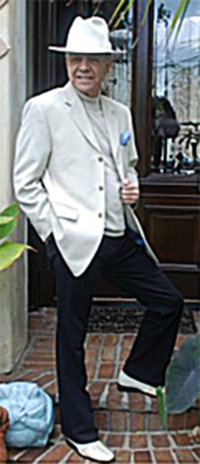 I wouldn’t hesitate for a second to tell ya this is easily my favorite of the many versions of Ronnie Love’s 1960 classic “Chills and Fever.” Produced by the musical tornado that is Dale Hawkins and the only release on Try Records, Allen Wayne’s take kicks in with a blazing drum fury that doesn’t let up once throughout the frenzied blur. Its velocity, brevity, and intensity combine to render “Chills and Fever” less of a song and more of a 158 BPM burst of pure feeling.
I wouldn’t hesitate for a second to tell ya this is easily my favorite of the many versions of Ronnie Love’s 1960 classic “Chills and Fever.” Produced by the musical tornado that is Dale Hawkins and the only release on Try Records, Allen Wayne’s take kicks in with a blazing drum fury that doesn’t let up once throughout the frenzied blur. Its velocity, brevity, and intensity combine to render “Chills and Fever” less of a song and more of a 158 BPM burst of pure feeling.
I did a little sleuthing about Allen Wayne. He worked in Louisiana from the 1960s into the 21st Century. Along with Clint West, Tommy McLain, Lil’ Alfred, and Duane Yates, he was one of many amazing vocalists to do a stint in one of the best bands to ever grace this planet, The Boogie Kings (who’ve been laying down their signature rock n’ soul n’ swamp pop all over the gulf coast since 1956… and are still at it!). His first record is on Shreveport’s Doric Records and the under-estimated former music hub’s late great Dale Hawkins produced his second and third releases. A decade later Wayne cut two 1975 singles on Lafayette’s Booray imprint, a 1977 45 from nearby Cade, Louisiana, on Take Note Records, and a final one from 1981 on East Texas novelty label Paid. He’s a killer singer with some solid material and I hope a whole lot more turns up about the man and his music in the future.
447. Johnny Guitar Watson “Ain’t Gonna Move” (Jowat, 1966)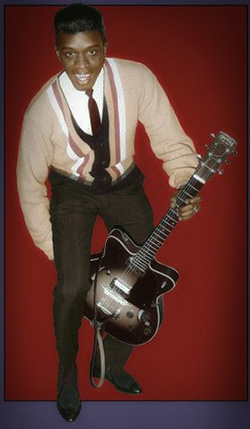 A peerless combination of supreme guitarist, singer, songwriter, entertainer, and personality, Johnny Guitar Watson is the real deal and then some. I’m not just in love, but eternally awed by his 1950s work. I’ve also spun his 1960s rockers like “Looking Back,” “I Say I Love You,” and the slow “Cuttin’ In” into the ground every Friday. And I get a kick out of his outlandish late ’70s funky hits and persona. But what to play if I want the gangster of love to make an appearance at my soul party? “I Say I Love You,” “Posin’,” and “Sweet Lovin’ Mama” don’t possess solid soul groove but fit sufficiently to be squeezed in on Saturdays. And while I’ve also turned Larry Williams-partnerships/productions like “A Quitter Never Wins,” “Mercy, Mercy, Mercy,” the psychedelic “Nobody” (with Kaleidoscope), and the Halloween oddball piano track “Wolfman” at the Soul Clap, like Williams’ Little Richard Okeh productions from the same period, the final product is overall too glossy for my taste and obscures what I consider to be the best qualities of the two geniuses….
A peerless combination of supreme guitarist, singer, songwriter, entertainer, and personality, Johnny Guitar Watson is the real deal and then some. I’m not just in love, but eternally awed by his 1950s work. I’ve also spun his 1960s rockers like “Looking Back,” “I Say I Love You,” and the slow “Cuttin’ In” into the ground every Friday. And I get a kick out of his outlandish late ’70s funky hits and persona. But what to play if I want the gangster of love to make an appearance at my soul party? “I Say I Love You,” “Posin’,” and “Sweet Lovin’ Mama” don’t possess solid soul groove but fit sufficiently to be squeezed in on Saturdays. And while I’ve also turned Larry Williams-partnerships/productions like “A Quitter Never Wins,” “Mercy, Mercy, Mercy,” the psychedelic “Nobody” (with Kaleidoscope), and the Halloween oddball piano track “Wolfman” at the Soul Clap, like Williams’ Little Richard Okeh productions from the same period, the final product is overall too glossy for my taste and obscures what I consider to be the best qualities of the two geniuses….
Which is where “Ain’t Gonna Move” comes in! My eighteenth-favorite Johnny Guitar Watson track and the only release on his Jowat imprint possesses both the soul groove for the dancers and raw sound that perks up my ears. And the warm street informality of his signature vocalizing is an ideal way to present a love song sans pathos and mush. And while I’m typically more about rhythm and feel when it comes to dance parties, this time I gotta emphasize the lyrics. “Like a tattoo on a sailor’s arm, I ain’t gonna move.” What better way to express romantic dedication? Watson’s such a real muther for ya, with so many mind-blowing talents, that we often forget he’s also one of post-war music’s great poets.
– You don’t have to look to hard to find material about Johnny Guitar Watson online but I recommend that everybody start out with The Hound’s take… An essential read!
– A couple of Watson interviews from shortly before his death in 1996 – where he’s still oozing style and charisma: HERE and HERE
448. Diane & Carole & The Watchamacallits “The Fuzz” (Speed, 1968)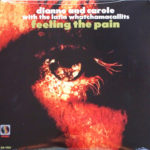 NYC veteran music industry movers and shakers Stan Lewis and Morty Craft’s aptly named Speed Records only existed for a year and released over 40 singles and LPs! Talk about moving and shaking… and Speed! Though Speed is known to soul people for their iconic Phil Flowers and The Flower shop LP, they were primarily a Latin label. And while there was nothing traditional about the Boogaloo innovations of the late ’60s, and the imprint had some more typical Latin records, Speed stands out today for flexing the already genre-bending Boogaloo style to the breaking point on shiny day-glow psychedelic pop-tinged treatments like The Latin Blues Band’s “Take A Trip” or The Moon People’s “Land Of Love” and, my personal favorite Speed release, the funky of “Happy Soul With A Hook” (with “Happy Organ” maestro Dave “Baby” Cortez!). The label’s high-fidelity oddities were the result of an unlikely collaboration between the upper echelons of New York’s pop and Latin music industries.
NYC veteran music industry movers and shakers Stan Lewis and Morty Craft’s aptly named Speed Records only existed for a year and released over 40 singles and LPs! Talk about moving and shaking… and Speed! Though Speed is known to soul people for their iconic Phil Flowers and The Flower shop LP, they were primarily a Latin label. And while there was nothing traditional about the Boogaloo innovations of the late ’60s, and the imprint had some more typical Latin records, Speed stands out today for flexing the already genre-bending Boogaloo style to the breaking point on shiny day-glow psychedelic pop-tinged treatments like The Latin Blues Band’s “Take A Trip” or The Moon People’s “Land Of Love” and, my personal favorite Speed release, the funky of “Happy Soul With A Hook” (with “Happy Organ” maestro Dave “Baby” Cortez!). The label’s high-fidelity oddities were the result of an unlikely collaboration between the upper echelons of New York’s pop and Latin music industries.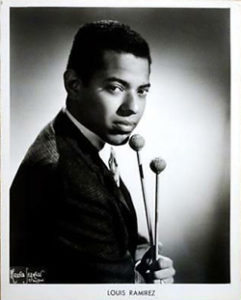 The more eccentric side of the Speed sound is on full display on Diane and Carole’s cautionary Boogaloo about the po-po, “The Fuzz!” You’ll get busted! The cops and robbers subject matter, the slick girl group harmonies, and the heavy Latin rhythm combine like fusion food for an oddly appealing juxtaposition. Laid down a hop, skip, and a jump from Carnegie Hall at music biz bigwig Art Talmadge’s state of the art Groove Sound Studio, this B-side to the baroque pop “Feelin The Pain” was written and arranged by the legendary Nuyorican percussionist/vibraphonist/bandleader Louie Ramirez in a prolific period after his work with Charlie Palmieri and Joe Cuba but before his triumphant stint as Fania’s house producer. The immaculate hi-fi boogaloo pop sound and aesthetic here is similar to that of the NY Night Train favorite he recorded for Mercury around this time “Lucy’s Spanish Harlem” / “The Boogie Man.”
The more eccentric side of the Speed sound is on full display on Diane and Carole’s cautionary Boogaloo about the po-po, “The Fuzz!” You’ll get busted! The cops and robbers subject matter, the slick girl group harmonies, and the heavy Latin rhythm combine like fusion food for an oddly appealing juxtaposition. Laid down a hop, skip, and a jump from Carnegie Hall at music biz bigwig Art Talmadge’s state of the art Groove Sound Studio, this B-side to the baroque pop “Feelin The Pain” was written and arranged by the legendary Nuyorican percussionist/vibraphonist/bandleader Louie Ramirez in a prolific period after his work with Charlie Palmieri and Joe Cuba but before his triumphant stint as Fania’s house producer. The immaculate hi-fi boogaloo pop sound and aesthetic here is similar to that of the NY Night Train favorite he recorded for Mercury around this time “Lucy’s Spanish Harlem” / “The Boogie Man.”
– Louie Ramirez’s bio at Fania Records
– The Vinyl Factory’s guide to their ten favorite Speed Records releases
449. Jasper Woods “Hully Gully Papa” (VPM, 1961)
This longtime favorite, which also appears on Norton Records’ “Souvenirs Of The Soul Clap, Vol. 3,” is by thee immortal Richard Berry under the pseudonym Jasper Woods. It was also included in this year’s “Sly and The Viscaynes” Ace Records’ compilation because its often claimed that the band you hear singing backup is the young Sylvester Stewart aka Sly Stone’s band The Viscaynes. Vallejo, CA’s Viscaynes aren’t only cool because of Sly and the Family Stone’s genius’ involvement but they were one of the earliest integrated vocal groups – black and white and Filipino. However one of the band’s vocalists Chuck Gebhardt denies involvement, telling Goldmine “I don’t remember doing [recordings] with anybody but us.” One of the other prominent figures involved in this magical recording is co-producer and VPM label boss George Matola, who isn’t only responsible for producing cult favorites like the wildest rock’n’roll record I own Kid Thomas’ “Rockin’ This Joint Tonight” and Young Jessie’s jumpin’ “Oochie Coochie,” but also writing and producing infinitely-covered timeless standards like Jessie Belvin’s “Goodnight My Love (Pleasant Dreams)” and Eddie Cochran’s “Jeannie, Jeannie, Jeannie.” 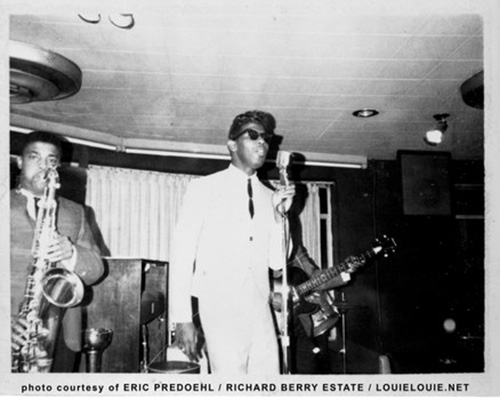
Richard Berry, whose career stormed out of the gate in brilliant L.A. teenage vocal groups like The Flairs and The Robins, and you can hear him singing bass on a number of Modern Records (he even does Henry’s dialogue in Etta James’ first hit “Wallflower (Dance With Me Henry)”), is best remembered for an accomplishment that eventually changed the face of popular music: he penned and originally recorded “Louie Louie.” It’s difficult to overstate the importance of “Louie Louie” in our culture and I highly recommend you check out Dave Marsh’s book about the song that was recorded by over a thousand artists, was investigated by the FBI, and wound up offering rock’n’roll a riff so omnipresent that its hard to imagine a world where it didn’t exist. Outside of the gargantuan shadow of both his participation in some of our most cherished primordial rock’n’roll and role as the originator of one of the world’s most famous songs, Richard Berry had a number of other significant musical accomplishments including his RPM solo sides like “Yama Yama Pretty Mama,” his classic Flip period which included his original version of “Have Love Will Travel,” and a few ’60s sides like “Hully Gully Pretty Mama.” His wife was the massively talented Raelette Dorothy Berry whose own 45s are always spinning at the Soul Clap and Dance-Off. Despite the enduring popularity of “Louie Louie,” Richard Berry was on welfare and living with his mother’s house in the ’80s. When California Cooler needed Berry’s signature to use the track in a commercial, the lawyer that tracked him down suggested he gain the rights to his hit. And, in a rare happy ending to one of these stories, the publishers settled and Berry spent the remainder of his life a millionaire before his passing in 1997.
Check out this fine Richard Berry bio From The Vaults
450. Al Garris “That’s All” (Glodis, 1961)
This strange, beautiful, and highly unique early soul rocker appeared on my first ever LP compilation Norton Records’ “Souvenirs of The Soul Clap, Vol.1.” A solid song put across with a twistin’ beat, an earthshaking vocal performance, bangin’ piano, and cool raw sound, “That’s All” would still be a worthwhile spin even if the the wildly unique horn riffing didn’t knock this one out of the park and into one-of-a-kind weirdness territory. I’ve tried in vain to learn more about Al Garris and his only known record. Clues point to New York City. Other Lutz-Kipness productions are primarily New York records – including one of my Friday night favorites, The Ebbtones’ pulverizing Mad Mike monster hotrod instrumental “Ram Induction!” Songwriter Al Prater is credited for co-authoring The Twisters’ “Pretty Little Girl Next Door” on Apt imprint. The remainder of Glodis Records’ limited known output are exclusively killer-dillers by legendary figures: Detroit’s under-rated goddess/music industry innovator Johnny Mae Matthews’ “Oh Baby,” Larry Davis with Jackie Shane’s future Toronto backing band, DC’s consistently cookin’ Frank Motley & Motley Crew’s pulverizing “I Love You Pretty Baby,” and another Friday favorite, Long Island’s extraordinary The Miller Sisters’ growling twister “Pop Your Finger (Hully Gully Dance).” I’d love to tell ya more but,… That’s All… folks…
451. Harold Jackson & The Jackson Brothers “The Freedom Riders” (Edsel, 1961)
FREEDOM TRAIN LEAVING ON TRACK 1961 AND 1962…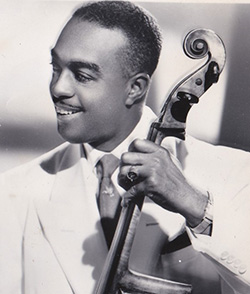 A rare cut celebrating CORE’s courageous Freedom Riders from the first year of their fearless civil disobedience protesting inter-state transportation segregation. This inventive beyond-category Kent Harris production features the Los Angeles-based group of Gary, Indiana-bred swingin’ biological siblings that predated Gary’s most famous musical Jackson family. The talented aggregation performed and recorded as The Jackson Brothers Orchestra and, together and separately, backed a number of the 1950s top rhythm and blues singers. Prolific bassist and bandleader Harold “Hack” Jackson does the up front spoken exclamations and I imagine his wife Dimples Harris, whose publishing company with her brother Kent Harris, gets a writing credit here, is the spunky voice interjecting “The time’s too slow! This old jazz has got to go!” Dimples also recorded and performed under her birth name Marcene Harris and was half of The Harris Sisters with her other sibling Betty (who was married to Redd Foxx!). I’m a sucker for train songs and am awed by the artful way the second-to-last release on the amazing Edsel Records weaves dramatic train sound effects into the whole.
A rare cut celebrating CORE’s courageous Freedom Riders from the first year of their fearless civil disobedience protesting inter-state transportation segregation. This inventive beyond-category Kent Harris production features the Los Angeles-based group of Gary, Indiana-bred swingin’ biological siblings that predated Gary’s most famous musical Jackson family. The talented aggregation performed and recorded as The Jackson Brothers Orchestra and, together and separately, backed a number of the 1950s top rhythm and blues singers. Prolific bassist and bandleader Harold “Hack” Jackson does the up front spoken exclamations and I imagine his wife Dimples Harris, whose publishing company with her brother Kent Harris, gets a writing credit here, is the spunky voice interjecting “The time’s too slow! This old jazz has got to go!” Dimples also recorded and performed under her birth name Marcene Harris and was half of The Harris Sisters with her other sibling Betty (who was married to Redd Foxx!). I’m a sucker for train songs and am awed by the artful way the second-to-last release on the amazing Edsel Records weaves dramatic train sound effects into the whole.
Kent Harris definitely deserves more than a passing mention! Taking the pseudonym “Boogaloo” in Boogaloo and his Gallant Crew” in the ’50s long before the dance move, the Latin soul subgenre, or the domestic terrorist organization, his “Clothes Line (Wrap It Up),” became The Coasters’ “Shoppin’ For Clothes” and Bo Diddley, The Rolling Stones, and more covered the brilliant “Cops And Robbers.” Harris went on to write and produce many more canonical songs over the years like The Duals’ “Stick Shift,” The Utopians “Dutch Treat,” and, the Soul Clap and Dance-Off favorite “Show Me How To Hunch Like That.”
RIGHT ON!!! RIDE ON!!!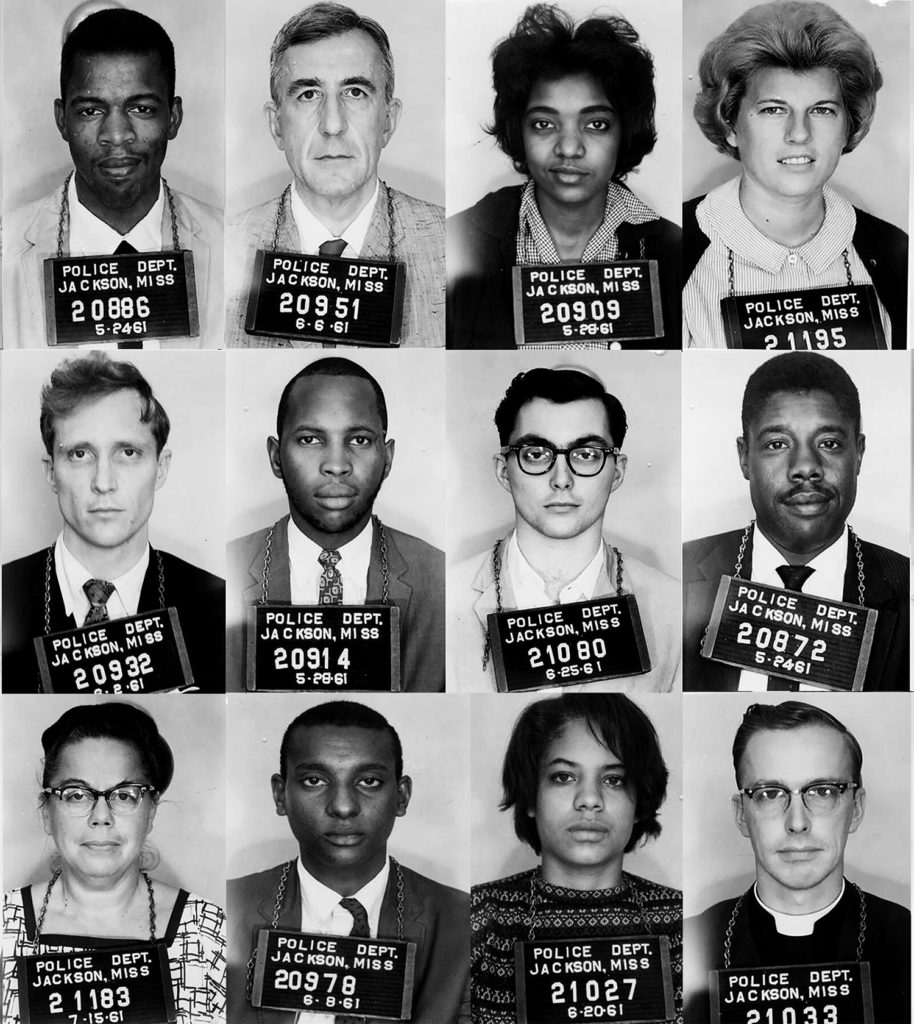
– learn more about the Freedom Riders on PBS’ “The American Experience”
– check out this killer Ponderosa Stomp Kent Harris bio
452. The Lollipops “Busy Signal” (RCA, 1965)
One of the most creatively executed and stunningly unique cuts of both the soul and girl group genres, this Action Pat favorite is an angular post-punk time machine back to the ’60s. One of the classiest subtleties of this shimmering creation is the spot-on 119.1 BPM rhythm that is the exact busy tone BPM. I cut The Lollipops “Busy Signal” against a few seconds of an actual busy signal in this section’s accompanying DJ mix to illustrate the precision of the band’s execution. You may also know chanteuse Gillian Hills’ 1966 French version “Tut Tut Tut Tut.” Joe Rene and his wife Malou Rene, famous for their work on Bobby Lewis’ smash “Tossin’ And Turnin’,” and a number of classic cuts by the likes of The Jive Five, Eddie Holman, and Vernon Harrell (note the similar forward thinking geometry on the iconic “Slick Chick”), respectively get the production and songwriting credits here.
The biggest star of this show however is the brilliant arrangement! I initially imagined the credited arranger/conductor “Charlie Fox” was Charlie Foxx of Inez and Charlie fame, but it turns out to be an early achievement of Charles Fox who not only worked on so many great ’60s latin and pop sides, but whose most notable later compositional work is currently lodged deep in your skull as you’re reading this: Roberta Flack’s “Killing Me Softly With His Song,” Jim Croce’s “I Got A Name,” the themes to TV shows like “Happy Days,” “Laverne & Shirlie,” “Wonder Woman,” “The Love Boat,” “Monday Night Football,” and film soundtracks from “Barbarella” and “Goodbye Columbus” to to “9 To 5” and “Strange Brew” and on and on and on and on… You’ve heard at least dozens of Charles Fox’s compositions.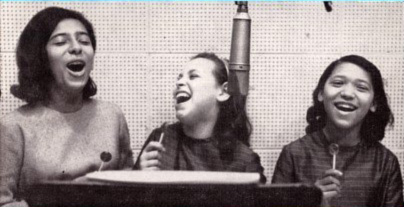
There’s much confusion about the identity of The Lollipops because so many bands shared the same name – most notably Detroit’s Lollipops who’re a Girl Group from roughly the same time and known for their Northern Soul favorites on the Impact and V.I.P. imprints. “Busy Signal’s” Lollipops are the effervescent New York vocal trio whose short run of 1964/1965 releases include one of the greatest Girl Group sides ever “Don’t Monkey With Me” plus a personal Orwellian fascination track following the mid-’60s spy song trend/craze, “Big Brother.” While there’re smatterings of information floating around about the Detroit group, details about NYC’s Lollipops and their uncommon material remain lost in the shadows.
– Charles Fox is still at it and has his own web site
453. King Coleman “Bulldog” (Columbia, 1961)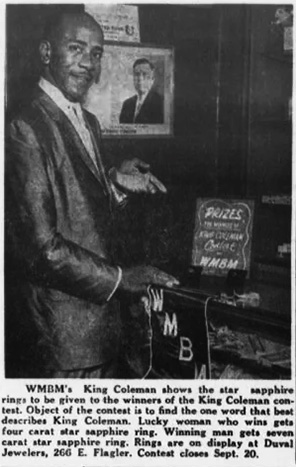 Of the eighteen or so exquisite King Coleman gems I turn at thee Clap, this one may be the most eccentric. And that says a lot for “Bulldog.” King Coleman is soul music’s number one surrealist and his wide variety of creative, memorable, and sometimes genius dance cuts have been reliable go-to’s for diversifying my sound and making things more interesting while still adding pure party feel. I’ve probably tuned its shakin’ B-side with as much frequency as “Bulldog.” And the only problem I’ve had with this list is trying to figure out a way to limit the dominance of King Coleman tracks because we gotta give other artists a chance!
Of the eighteen or so exquisite King Coleman gems I turn at thee Clap, this one may be the most eccentric. And that says a lot for “Bulldog.” King Coleman is soul music’s number one surrealist and his wide variety of creative, memorable, and sometimes genius dance cuts have been reliable go-to’s for diversifying my sound and making things more interesting while still adding pure party feel. I’ve probably tuned its shakin’ B-side with as much frequency as “Bulldog.” And the only problem I’ve had with this list is trying to figure out a way to limit the dominance of King Coleman tracks because we gotta give other artists a chance!
It’s difficult to know where to start or how to sufficiently describe the phenomenon that was Carlton “King” Coleman and his role in rhythm and blues and soul music. He grew up in Tampa, got his start drumming in local dance bands, and was on a tour of carnivals singing, dancing and drumming with Charles Taylor Bronze Mannequin Revue at 15. After singing with Virginia’s Griffin Brothers Orchestra, he migrated to Lionel Hampton’s group but never recorded with the legendary vibraphonist because he was drafted 1952. After a spell in the army he moved to Miami where he became one of the city’s most popular and powerful radio DJs by helping bring rhythm and blues to the airwaves and his peerless patter. His on air persona was loaded with the kind of jive rhyming couplets that not only became the basis of his signature ’60s vocal style, but also were so influential locally that he became known as the “Grandfather of Miami Rap” – particularly for his influence on the innovative talent that is Clarence Reid aka Blowfly. Also Miami music mogul Henry Stone explained another reason for King Coleman’s broadcasting success: “He used to give the numbers on the air. Bolita. The numbers. When he broadcast on the radio, he used to give the numbers out, man, street lottery, for whoever ran it, the gangsters.”
His life would be forever changed by his acquaintance with James Brown. Though an altercation between the two when Colemen emceed his show at The Palms in Hallandale culminated in Coleman kicking out the windows of Brown’s new Cadillac, the odd couple became friends. And after Syd Nathan wouldn’t let James Brown record his new track capitalizing off of the new underground Mashed Potatoes dance step for King Records, the Godfather of Soul cut it with the Grandfather of Miami Rap on the mic to mask the identity of the band. After releasing the single on Henry Stone’s Dade Records and crediting it to the fictional Nat Kendrick and the Swans, and crediting the songwriting to a new Brown pseudonym “Dessie Rozier,” “(Do The) Mashed Potatoes” shot up into the national R&B Top 10 in 1960 and was the first shot of the worldwide Mashed Potato craze that peaked with Dee Dee Sharp’s “(Do the) Mashed Potatoes” in 1962. While the band bit into the track with gusto, Coleman’s unusual voice was the element that stood out most. He returned to the studio again and again throughout the 60s, criss-crossing the world, and churning out a wealth of wildy original material on big and small labels – most famously in 1967 with the help of James Brown and his band on 1967’s singularly brilliant “The Boo Boo Song.” Twenty-two of these masterpieces are still in print today on Norton Records action-packed compilation LP “It’s Dance Time.”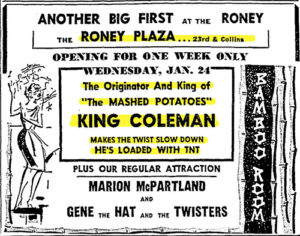 One final digression. King Coleman wasn’t only a big emcee in Miami but all over the soul circuit. Discussing Coleman’s excellence in the role with the Miami New Times, Clarence Reid declared, “That bitch could entertain!… If he brought ten acts, he’d change his clothes every time. He would perform. He would dance. Some people would go to the show to see the acts. I would go to see King Coleman emcee!” Coleman appears most frequently in history books for his role in getting a nervous and green Otis Redding over crippling stage-fright during his debut at the Apollo. Coleman reassured young Otis about his talent, told him not to worry about the crowd but to catch the eye of a girl and sing only to her, and then proceeded to introduce the newcomer to the notoriously fickle Apollo audience with the endorsement: “He can sing, baby, he can sing!”
One final digression. King Coleman wasn’t only a big emcee in Miami but all over the soul circuit. Discussing Coleman’s excellence in the role with the Miami New Times, Clarence Reid declared, “That bitch could entertain!… If he brought ten acts, he’d change his clothes every time. He would perform. He would dance. Some people would go to the show to see the acts. I would go to see King Coleman emcee!” Coleman appears most frequently in history books for his role in getting a nervous and green Otis Redding over crippling stage-fright during his debut at the Apollo. Coleman reassured young Otis about his talent, told him not to worry about the crowd but to catch the eye of a girl and sing only to her, and then proceeded to introduce the newcomer to the notoriously fickle Apollo audience with the endorsement: “He can sing, baby, he can sing!”
If you follow any link I direct you to ever, it should be Blowfly manager/drummer Tom Bowker’s 2003 King Coleman must-read from the Miami New Times
Also henrystonemusic.com has some valuable King Coleman information and also rare newspaper clippings like the ones you see here
Other King Coleman original 45s spun at the NY Night Train Soul Clap & Dance-Off:
– Loo – Key Doo – Key Pt 1 (Dade, 1960)
– Black Bottom Blues (Columbia, 1961)
– Let’s Shimmy (Symbol, 1961)
– Shortnin’ Bread (Symbol, 1961)
– Alley Rat (Kenco, 1961)
– Dressed In Plaid (Kenco, 1961)
– Crazy Feelin’ (Togo, 1962)
– Down In The Basement (Togo, 1962)
– Believe It Or Not (Togo, 1962)
– Salt And Pepper (Sylvia, 1964)
– It’s Dance Time Pt 1 (Dade, 1965)
– Do The Booga Lou Pt 1 (Port, 1966)
– Get On Board (Port, 1966)
– The Boo Boo Song, Pt 1 (King, 1967)
– Hang It Up (King, 1967)
– Three Soulful Mice (King, 1967)
– Show Me What You Got Pt 1 (Big Apple, ?)
454. The Experts “Shing-A-Loo & Boog-A-Ling Big Mama” (Tag, Ltd. 1967)
Like a lot of folks I picked this record up for the mid-tempo soul rarity “My Love Is Real,” but unlike a lot of folks wound up discovering its outlandish dance party side “Shing-A-Loo & Boog-A-Ling” and had a blast watching everybody go bananas every time I drop the needle on it. Just another DJ changing sides by flippin’ the record. While The Experts are an otherworldly vocal group and clearly working within the upper echelons of the Los Angeles studio system, they only left behind two records and there’s very little out there about them. However the opposite can be said for everybody else involved. The arranger is virtuosic pianist Ernie Freeman who not only had scores of his own releases, but was involved in a staggering array of important records, arranging and conducting the orchestra on Sinatra standards like “Strangers In The Night” and “That’s Life,” producing J.J. Jackson’s canonical Mad Mike Monster “Oo-Ma-Liddi,” and making the keys fly all over the place on Kim Fowley’s honkey-tonked interpretation of “Flight of the Bumble Bee,” B. Bumble and The Stingers “Bumble Boogie.” His accomplishments are infinite! Another pressing of this single on Tag, Ltd from the same time credits “The Experts With Tommy Dodson & The Best Men.” Keyboardist/vocalist Tommy Dodson recorded a few of his own cool sides like the rockin’ r&b “Love Love Love,” the Northern Soul spin “One Day Love,” the funky classic “Cooperation,” and other in-demand expensive platters that move dancefloors around the world more than ever. And the music was written by Joe Turneo who penned everything from early ’50s killers like Eddie Jefferson’s “Stop Talkin’, Start Walkin” and Big Mama Thornton’s “I Ain’t No Fool Either” to ’60s standouts like Jesse Johnson’s “You’re Blowing Holes (In My Soul)” to personal favorite Little Luther’s “Du Dee Squat.” So, like “Churn The Butter” in the last installment, these are serious players attempting to tap into the often elusive magic of the kind of weird and wild raw dance party song that’s often beneath this caliber of writing, playing, and recording… And succeeding!
– Sir Shambling’s The Experts and Tommy Dodson pages
– One Hit Wonders’ Ernie Freeman bio
455. Shelton Dunaway and The Cupcakes “The Duck” (Lyric, ?)
Despite the fact this is thee immortal Cookie and The Cupcakes, I don’t know anybody who either owns or plays this bizarre dance party rarity and it doesn’t have a Discogs or 45cat entry. Shelton Dunaway and His Boogie Ramblers, who formed in 1952 tp become the house band at Lake Charles, Louisiana’s Moulin Rouge Club, gradually evolved into Cookie and The Cupcakes. While Huey “Cookie” Thierry became these Swamp Pop legends’ marquee leader, tenor saxman Dunaway shared lead vocal duties and many of their most notable songs feature his singing – including their 1959 breakout “Mathilda.” A number of releases from the band’s Twisted family tree and confusing catalogue appear under Dunaway’s name on the Lyric, Khoury’s, and Jin labels. “The Duck” along with a number of other stellar iconic hits and obscure misses appeared on the Jin Records collection “By Request” and you can also find the track on Norton Records’ “Souvenirs of the Soul Clap, Vol. 4.” 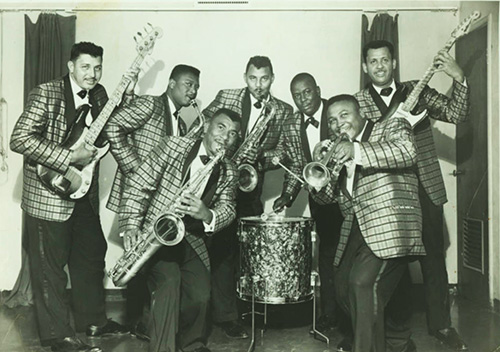
– Gene Tomko’s amazing Shelton Dunaway article from Living Blues
Other Shelton Dunaway and the Cupcakes original 45s spun at NY Night Train Soul Clap & Dance-Off:
– Franko-Chinese Cha Cha Cha (Khoury’s, 1961)
– Shake ‘Em Up (Lyric, 1963)
456. The Latinaires “Camel Walk” (Fania, 1968)
Perhaps the most-instantly recognizable intro of the boogaloo genre and distinct in many ways from any record I’ve ever come across, “Camel Walk” was the first brilliant spark of the fleeting flash that was The Latinaires. Signed to Fania Records in the label’s adventurous ’60s period, these young upstarts’ multi-cultural make-up typified their diverse Bronx environment as much as the psychedelic tinges of their sound reflected their times. While as rhythmically rich as their boogaloo brethren, these rebellious outsiders’ organ-heavy approach was also unique in that it eschewed trumpets and trombones in favor of a wall of saxophones. The entire canonical “Camel Walk” album is a thrilling ride and its followup “Like It Is” on Cotique has also become essential listening. Though the Latinaires dissolved into the cityscape in 1970, the daring sound, timeless music, and memorable LP covers combine to convert new fanatics every day.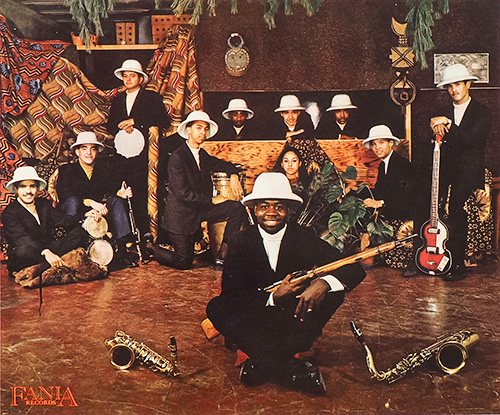
457. Bobby Adams “Don’t You Feel It” (Purdy 1964)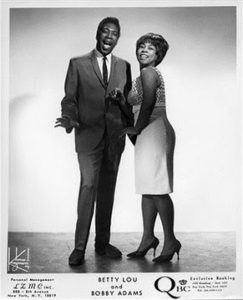 A longtime Clap favorite on drum god Bernard “Pretty” Purdy’s Purdy imprint! “Don’t You Feel It” is all tension and anticipation held back tight with a colossal latin beat, swelling horns, and Adams’ fervent “don’t you feel its,” “lemme hear ya say feel alrights” and “lemme hear you say ‘yeah’s!” An immaculate soulful mid-tempo monster to blare at top volume and watch the mesmerized dancers float into its thick ambience! While there’s not a lot out there about Seattle native Bobby Adams, who also recorded as Grier Adams and as Betty Lou and Bobby Adams in duets with Betty Smith, this golden-throated soul man cut at least sixteen singles from the late ’50s to early ’70s for notable New York labels like Colpix, Symbol, Battle, and Big Bee. And since his three 1970 self-written and produced 45s are make up the entire Home-Town Records catalogue, I’m assuming it may have been his own imprint. I would love to know more about this earth-shaking voice!
A longtime Clap favorite on drum god Bernard “Pretty” Purdy’s Purdy imprint! “Don’t You Feel It” is all tension and anticipation held back tight with a colossal latin beat, swelling horns, and Adams’ fervent “don’t you feel its,” “lemme hear ya say feel alrights” and “lemme hear you say ‘yeah’s!” An immaculate soulful mid-tempo monster to blare at top volume and watch the mesmerized dancers float into its thick ambience! While there’s not a lot out there about Seattle native Bobby Adams, who also recorded as Grier Adams and as Betty Lou and Bobby Adams in duets with Betty Smith, this golden-throated soul man cut at least sixteen singles from the late ’50s to early ’70s for notable New York labels like Colpix, Symbol, Battle, and Big Bee. And since his three 1970 self-written and produced 45s are make up the entire Home-Town Records catalogue, I’m assuming it may have been his own imprint. I would love to know more about this earth-shaking voice!
458. The Mirettes “Your Kind Ain’t No Good” (Mirwood, 1966)
When The Ikettes’ popularity soared in 1965 when “Peaches ‘N’ Cream” climbed up the pop charts, Ike Turner kept his backup singers on the The Ike and Tina Turner Revue’s eternal tour – fulfilling the new demand for prestigious new bookings with fake Ikettes. The hitmaking trio endured grueling daily drives to dives as they crisscrossed the country singing backup while the imposters performed their hits to sold out crowds in theaters, arenas, and stadiums on the Dick Clark Caravan of Stars tour. To add insult to injury, even during their hit-making periods, The Ikettes were paid only their usual meagre live backup singer salaries. While Ike assembled the band, wrote and produced the songs, and negotiated with their contracts with labels, the singers didn’t see compensation for any of their prolific studio work all the way back to their 1962 Top 20 pop hit “I’m Blue (The Gong-Gong Song).” But they couldn’t do much to remedy this situation. Turner owned their name, their image, and all of their music.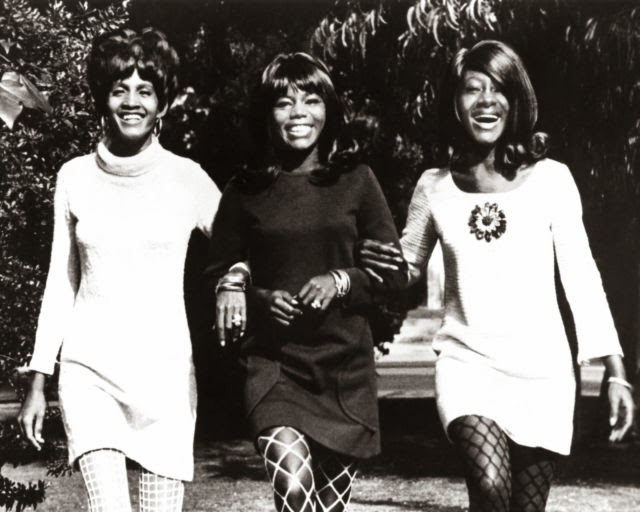
After helplessly watching “Peaches ‘N’ Cream’s” followup, “I’m So Thankful” climb the R&B charts later that year, The Ikettes stood up and liberated themselves from Ike Turner’s powerful grasp. They abandoned the Revue, took on Tina Turner’s sister Alline Bullock as their manager, and were on the cusp of a sixty-day U.S. tour before Ike took legal action and shut it down. They next signed to L.A.’s Mirwood Records, who rechristened them The Mirettes, and recording their debut single “You’re Kind Ain’t No Good.” You’re hearing the sound of Robbie Montgomery, Venetta Fields, and Jessica Smith’s newfound freedom and you can’t help but think they had Ike in mind when they harmonized on the choruses. Mirwood’s Mirettes releases went nowhere fast but they moved to MCA subsidiary Revue where they had a minor hit with a cover of “In The Midnight Hour.” Though The Mirettes churned out nine more solid releases in the ’60s on Revue and other prestigious labels like Minit and Uni, they evaded commercial success. A couple of records turned up on the small imprints Zea and Soul Fox in the ’70s as the band fizzled out. Getting all new replacements after The Mirettes’ 1965 departure, Ike Turner kept a revolving cast of singers performing with Ike and Tina Turner Revue and recording as The Ikettes into the ’70s. But his new trios also failed to chart another hit. Despite their hard luck, considering the quantity and quality of the The Mirettes/Ikettes material, they stand out as both one of the best soul vocal groups and Girl Groups of all time. And have ya seen ’em dance?
– You can find plenty of Ikettes information all over the web and here’s a solid Mirettes page
More Ikettes/Mirettes original 45s spun at NY Night Train Soul Clap and Dance-Off:
– I’m Blue (The Gong-Gong Song)(Atco, 1961)
– Troubles On My Mind (Atco, 1962)
– I Do Love You (Atco, 1962)
– Crazy In Love (Teena, 1962)
– Pee Wee (Teena, 1962)
– No Bail In This Jail (Prisoner In Love) (Teena, 1963)
– Camel Walk (Modern, 1964)
– Don’t Feel Sorry For Me (Modern, 1965)
– What’cha Gonna Do (When I Leave You) (Phil-Dan, 1966)
459. Curtis Knight ”How Would You Feel” (RSVP, 1966)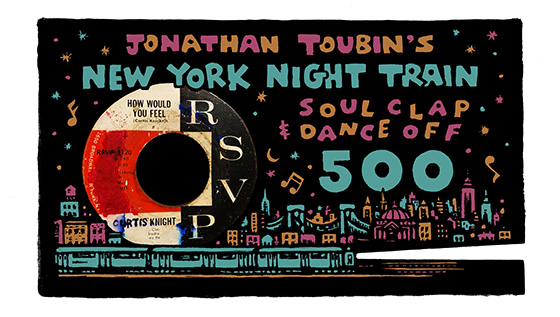
The owners of this copyright wouldn’t allow this one on my YouTube, but by this point its been re-released and anthologized so many times that its easy to hear elsewhere. 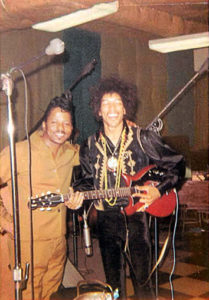 Since nearly every civil rights-themed soul track from this time has received so much historical attention, contemporary music fans assume these songs were ubiquitous. But the truth is that, out of the thousands upon thousands of soul releases hitting the market in the mid-’60s, only a tiny fraction directly address civl rights issues. And of this relatively limited output, Curtis Knight’s lyrics to “How Would You Feel” are are some of the most straightforward and hard-hitting on record. Though this is essentially a cover of “Like A Rolling Stone,” Curtis Knight gets 100% of the writing credits here. If my copy’s label weren’t so worn away, you’d see small print below Curtis Knight’s name saying “Arr. by Jimmy Hendrix.” While Hendrix had already contributed his powerful musicianship to a number of releases by a few artists, this is the first time his name appeared on any credits. In a legal deposition a few years later Hendrix stated that he played “all of the instruments except the drums… four (overdubs) including bass.” This is also a landmark recording not only because its Hendrix’s first taste of this much musical freedom in the studio, and sonically vastly distinct from any other 1965 American soul recording, plus a couple of years ahead of its time in general, but also “How Would You Feel” is evidence that Hendrix’s sound and style was already nearly fully realized by its recording date.
Since nearly every civil rights-themed soul track from this time has received so much historical attention, contemporary music fans assume these songs were ubiquitous. But the truth is that, out of the thousands upon thousands of soul releases hitting the market in the mid-’60s, only a tiny fraction directly address civl rights issues. And of this relatively limited output, Curtis Knight’s lyrics to “How Would You Feel” are are some of the most straightforward and hard-hitting on record. Though this is essentially a cover of “Like A Rolling Stone,” Curtis Knight gets 100% of the writing credits here. If my copy’s label weren’t so worn away, you’d see small print below Curtis Knight’s name saying “Arr. by Jimmy Hendrix.” While Hendrix had already contributed his powerful musicianship to a number of releases by a few artists, this is the first time his name appeared on any credits. In a legal deposition a few years later Hendrix stated that he played “all of the instruments except the drums… four (overdubs) including bass.” This is also a landmark recording not only because its Hendrix’s first taste of this much musical freedom in the studio, and sonically vastly distinct from any other 1965 American soul recording, plus a couple of years ahead of its time in general, but also “How Would You Feel” is evidence that Hendrix’s sound and style was already nearly fully realized by its recording date.
Despite pre-solo Jimi Hendrix’s exceptional talent, he had trouble keeping his sideman jobs or making ends meet as a studio musician. In 1965 alone, he’d been a touring member of Little Richard’s band, rejoined the Isley Brothers for “Move Over And Let Me Dance” / “Have You Ever Been Disappointed” plus a few road dates, and did a few months in Joey Dee and The Starlighters (with Jimmy Mayes of “Monkey Shine”/”Drums For Sale” fame! not long after Joe Pesci’s stint in the band… for real!). On the October day he met Curtis Knight in the lobby of one of his many temporary residences, the run-down Americana Hotel off of Times Square, he was out of money, gigs, and luck. The two immediately hit it off and went right to work setting Knight’s “How Would You Feel” lyrics to music at Ed Chalpin’s PPX Studios. In a move that would come back to haunt him, Hendrix, who had already signed an exclusive contract with Juggy Murray’s Sue Records a few months previous, inked a three-year deal with Chalpin on the spot. After Hendrix became an international rock star, this contract came back to haunt him. His 1965/1966 sessions plus another ill-advised 1967 overdub session at PPX resulted in decades of mostly substandard Knight/Hendrix releases – literally hundreds of them.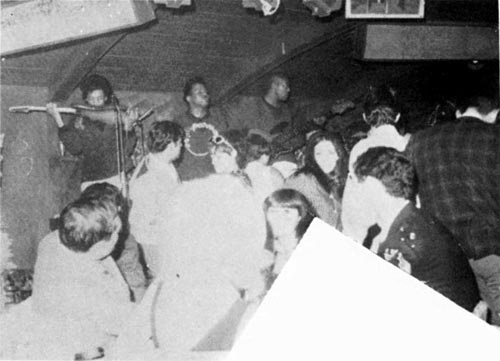
Though Knight is sometimes vilified for exploiting his brief time in young guitarist’s orbit for his own financial gain, Knight kept Hendrix working throughout much of 1966 as a member of his hard-hustling Curtis Knight and The Squires. The band featured all top players like saxophone legend Lonnie Youngblood (who Hendrix eventually backed on a few canonical sides), organist Nate Edmonds who later went on the Soul Train in the Rimshots, and drummer Marion Booker was to swing so much of the Groove Grease of soul jazz maestros like Lonnie Smith, Jimmy McGriff, and George Benson. The stint in The Squires also exposed Hendrix, who had been almost exclusively of the soul circuit, to the new (and it should be noted – mostly white) youth culture developing in Manhattan. When The Squires became the house band at the snazzy new, pioneering, and soon to be iconic Cheetah nightclub on Broadway at 53rd, Hendrix’s guitar work was admired by an hip mix that included everyone from Richie Havens to Salvador Dali to Keith Richards’ girlfriend Linda Keith. Keith proved to be Hendrix’s most consistent and important proponent and, bringing Hendrix’s future manager The Animals’ Chas Chandler, to check out the innovative newcomer, was instrumental in Hendrix’s rapid rise to fame. While Hendrix quickly grew bored with the constraining repertoire of cover songs and began to resent competing to be heard over Knight’s bigger amp, better guitar, and lesser playing on stage, Curtis Knight introduced Hendrix to an entirely different world that would impact his future in many ways. It is also worth noting that Curtis Knight and The Squires’ 1966 “Hornet’s Nest” single was one of the most exciting tracks of Hendrix’s recorded legacy.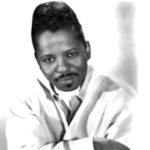 Finally, Curtis Knight would’ve still been an interesting figure in rock’n’soul history if Hendrix never existed. Curtis McNair initially gained notoriety singing tenor and baritone in the amazing L.A. vocal group The Titans. Sonny Bono signed them to Specialty in 1957 and then Googie Rene signed them to Class in 1959. McNair is the lead vocalist on hits like “Sweet Peach” and NYNT Friday night favorite “No Time.” You can also see footage of the band in the enduring 1957 B-Movie “Bop Girl Goes Calypso.” After quitting The Titans, McNair spent a couple of years in one of the few official incarnations of The Ink Spots with original member Charles Fuqua. He next recorded eight ’60s releases as Curtis Knight. In addition to some of the Squires’ material, I’m in love with emotive macabre camp of his 1961 “Voodoo Woman” on Gulf and turn it both on Halloween and at the Soul Clap. And while it’s not my cup of tea, 1962’s “Little Doe-Doe” on Shell is a popular European popcorn/r&b DJ spin that is sought-after enough to warrant a recent bootleg. Knight moved to London in the ’70s, became a heavy psych rocker, and released a couple of albums and a handful of singles as Curtis Knight, Zeus in 1973 and 1974. Knight’s penchant for discovering mind-blowing axemen was proven once again when he hired Zeus’ lead guitarist – the fabulous Fast Eddie Clarke of Motorhead’s original classic period and later Fastway.
Finally, Curtis Knight would’ve still been an interesting figure in rock’n’soul history if Hendrix never existed. Curtis McNair initially gained notoriety singing tenor and baritone in the amazing L.A. vocal group The Titans. Sonny Bono signed them to Specialty in 1957 and then Googie Rene signed them to Class in 1959. McNair is the lead vocalist on hits like “Sweet Peach” and NYNT Friday night favorite “No Time.” You can also see footage of the band in the enduring 1957 B-Movie “Bop Girl Goes Calypso.” After quitting The Titans, McNair spent a couple of years in one of the few official incarnations of The Ink Spots with original member Charles Fuqua. He next recorded eight ’60s releases as Curtis Knight. In addition to some of the Squires’ material, I’m in love with emotive macabre camp of his 1961 “Voodoo Woman” on Gulf and turn it both on Halloween and at the Soul Clap. And while it’s not my cup of tea, 1962’s “Little Doe-Doe” on Shell is a popular European popcorn/r&b DJ spin that is sought-after enough to warrant a recent bootleg. Knight moved to London in the ’70s, became a heavy psych rocker, and released a couple of albums and a handful of singles as Curtis Knight, Zeus in 1973 and 1974. Knight’s penchant for discovering mind-blowing axemen was proven once again when he hired Zeus’ lead guitarist – the fabulous Fast Eddie Clarke of Motorhead’s original classic period and later Fastway.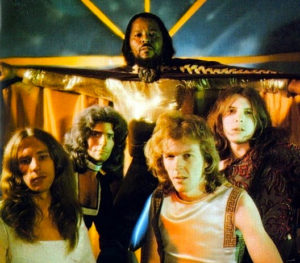
– An amazing resource for specifics about Curtis Knight and Hendrix as a side-man EarlyHendrix.com
– Marv Goldberg’s Titan’s page
Other Curtis Knight original 45s spun at NYNT Soul Clap and Dance-Off:
– Voodoo Woman (Gulf, 1961)
– Hornet’s Nest (RSVP, 1966)
460. Lee Moses “Got That Will” (Maple, 1970)
I’m so thrilled to see Lee Moses getting so much attention the last few years. Though Moses never had anything that resembled a hit, I turn all of his 45s because of every aspect of his signature sound. The vocals, the musicianship, the arrangements, the production, and particularly the feel consistently embody my ideal of the uncommon raw power that only a tiny fraction of records, soul or otherwise, possesses. This track, bristling with the optimism for his future in music, and exemplifying the ambition and sweat that helped create his peerless sides, is also a swan song filtered through the tragedy of what we know about his life and career. Outside of a one-off Gates single a few years later, “Got That Will” proved to be Lee Moses’ final release and last gasp of New York ambition. While Moses never found himself anywhere near the level of the goalposts he name-checks here, Aretha Franklin, Jimi Hendrix, Sly and the Family Stone, etc., his work belongs in the same category and in his recordings holds up more than most of them.
Though best remembered for his stunning vocal delivery, Lee Moses made a living as a top-notch session guitarist and sideman who was a friend and collaborator to some of “Got That Will’s” roll-call. Born in Atlanta in 1941, Lee Moses’ local prominence was achieved shining in one of many bands christened The Showstoppers. He rapidly became one of the most sought-after guitarists in A-Town’s buzzing recording scene. By the mid-’60s he was trying out his luck in New York City where a friend from back home, storied producer and music biz operator Johnny Brantly, got Moses session work and deals for his own solo recordings. His 1965 solo debut on Lee John, a killer stab at Joe Simon’s “My Adorable One” backed with a personal favorite “Diana (From N.Y.C.),” fell on deaf ears. In 1967 he returned to the studio to churn out a trio of landmark singles for Musicor Records: the bangin’ instrumental covers “Reach Out, I’ll Be There” / “Day Tripper,” “Bad Girl,” and “I’m Sad About It.” These universally adored soul classics were dead on arrival in their time. After dusting himself off and getting back in the race with 1968’s strong “Never In My Life” on Dynamo, 1970’s “Time and Place” on Front Page and 1971’s legendary “Got That Will” on Maple set the stage for Moses’ big break, his first and only LP, “Time and Place.” After the album’s anticlimactic performance he returned home to Georgia disenchanted with the music industry. You hear his exciting guitar work on his old friend King Hannibal’s (Mighty Hannibal!) canonical 1973 LP “Truth” (which kicks off with a version of “Got That Will”). He revisited “Bad Girl” as “She’s A Bad Girl” and delivered a hair-raising rendition of “Dark End Of The Street” in 1973 on Atlanta’s tiny Gates imprint before disappearing into obscurity and dying of lung cancer in 1998 – posthumously achieving “Got That Will’s” stardom only in recent years.
– All of this exceptional music is currently in print as Light In The Attic reissued the “Time and Place” LP and collected his singles and rarities on “How Much Longer Can I Wait”
– Sir Shambling’s Lee Moses page
– In Dangerous Rhythm’s Lee Moses page
– Other Lee Moses original 45s spun at NY Night Train Soul Clap & Dance-Off
– Diana (From N.Y.C.) (Lee John, 1965)
– Reach Out, I’ll Be There (Musicor, 1967)
– Day Tripper (Musicor, 1967)
– Bad Girl, Part 1 (Musicor, 1967)
– I’m Sad About It (Musicor, 1967)
– Never In My Life (Dynamo, 1968)
– Time And Place (Front Page, 1971)
– She’s A Bad Girl (Gates, 1973)